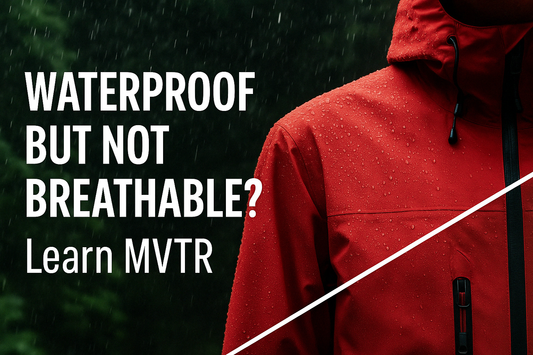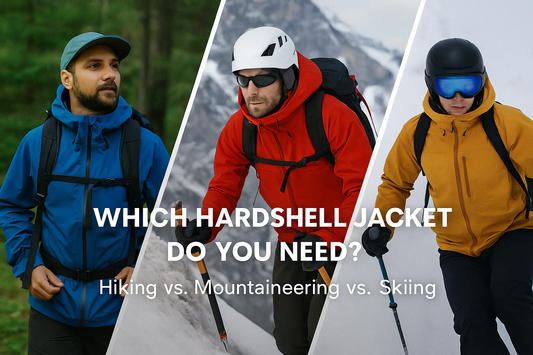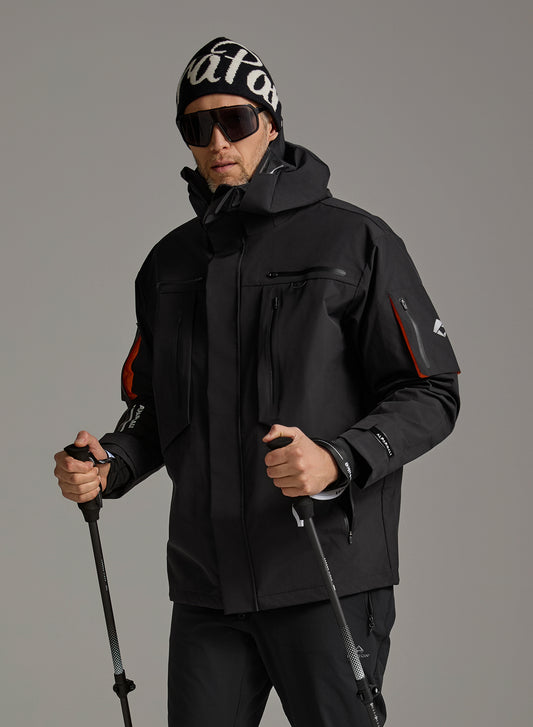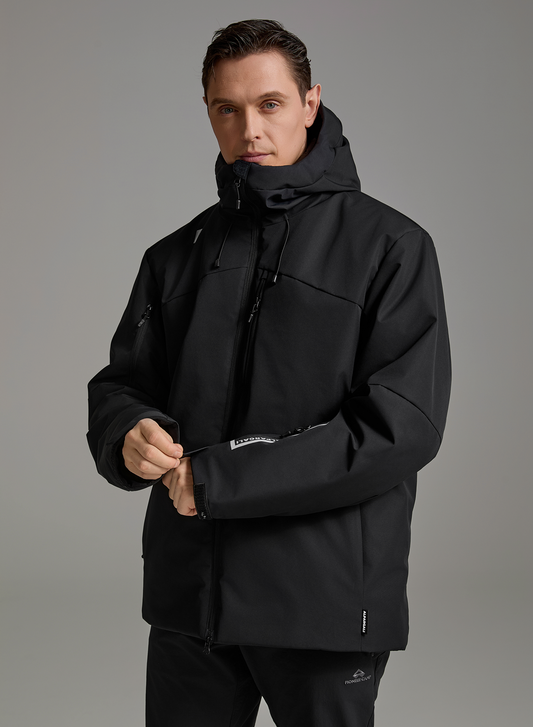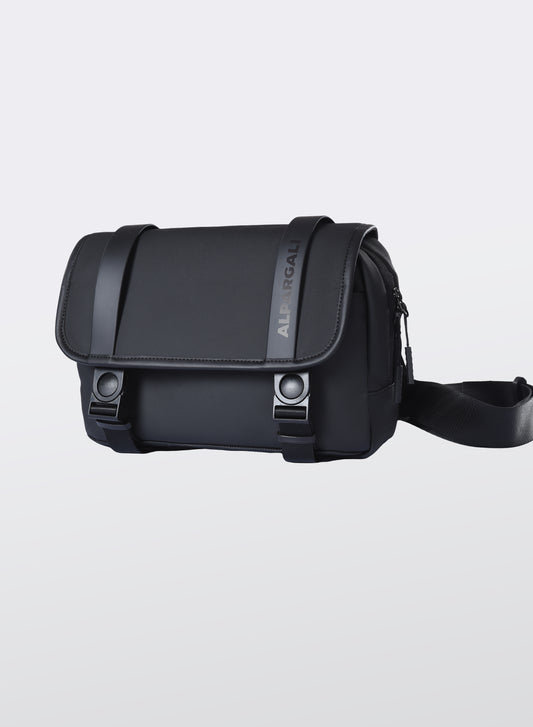
How to Choose a Hardshell Jacket for Hiking, Mountaineering, and Skiing? Practical Recommendations for 3 Outdoor Scenarios
Share
1. Hiking: Lightweight & Breathable First

Hiking usually involves prolonged movement, moderate physical effort, and minimal gear load. This means your jacket should focus on comfort and breathability, with waterproofing as a secondary priority.
Recommended Features:
- Lightweight design for ease of carrying and packing
- High breathability to reduce sweat buildup during movement
- Basic wind and water resistance for light rain or wind
Ideal Fabrics:
- Gore-Tex Paclite®, Pertex Shield, or Event LT
- 2-layer or 2.5-layer construction for improved comfort and reduced weight
Best For:
- Day hikers and casual trekkers in spring and autumn
- Beginners seeking lightweight gear
Suggested Layering:
Hardshell jacket + moisture-wicking base layer + quick-dry pants
2. Mountaineering: Full Protection & Durability

Mountaineering is one of the most demanding environments for gear. Whether you're facing snowstorms, rocky terrain, or high altitudes, your jacket must offer top-tier waterproofing, durability, and structure.
Recommended Features:
- High waterproof rating (≥20,000mm H₂O) for snow and rain
- Reinforced abrasion resistance and weatherproof construction
- Technical designs like helmet-compatible hood, underarm zips, and alpine cut for backpacks
Ideal Fabrics:
- Gore-Tex Pro, Dermizax NX, Neoshell with 3-layer construction
- Fully taped seams and reinforced stress zones
Best For:
- Advanced alpine climbers and winter mountaineers
- Long treks in extreme conditions
🧥 Suggested Layering:
3-layer hardshell + fleece or insulated mid-layer + thermal base + mountaineering pants
3. Skiing: Warmth + Snow Protection

Skiing requires a balance between warmth, movement, and snow-specific protection. Jackets for this activity should prioritize thermal insulation and snow-blocking features, along with decent waterproofing.
Recommended Features:
- Powder skirts and wrist gaiters to keep snow out
- Insulated lining or 3-in-1 system for cold environments
- Multiple pockets for ski pass, goggles, and essentials
- Helmet-compatible hoods
Ideal Fabrics:
- Waterproof breathable outer shell with soft or down inner layer
- Suggested water resistance ≥15,000mm + breathability ≥10,000g/m²/24h
Best For:
- Skiers of all levels
- Winter travelers in snowy areas
Suggested Layering:
Ski shell jacket + insulated inner + ski pants + helmet and gloves
Summary: Choose Based on Activity, Not Just Price
| Activity | Jacket Type | Key Features | Best Season |
| Hiking | 2-layer light shell | Breathability, packability | Spring/Fall |
| Mountaineering | 3-layer shell | Waterproofing, durability | All-season |
| Skiing | Insulated / 3-in-1 | Warmth, snow protection | Winter |
Many people fall into the trap of thinking "more expensive = better." But in truth, a hardshell jacket only performs well when it fits your specific activity.
Bonus Tip: Want All-in-One? Go for a 3-in-1 Jacket
If you're looking for flexibility across different activities (like commuting, hiking, and skiing), a 3-in-1 modular jacket is a great option. The outer shell handles wind and rain, while the detachable inner layer keeps you warm.
